If you’re a man, you’ve probably experienced pain or discomfort while riding a bike. Bike seat pain for men can be frustrating especially if you have a fancy, expensive bicycle but truth be told, sometimes the problem is not the quality of your bike.
That’s exactly what we’ll be talking about in this guide.
We’ll be looking at some of the most common discomfort issues men experience while riding on the saddle. Of course, we can’t just highlight the problems without telling you how to solve them.
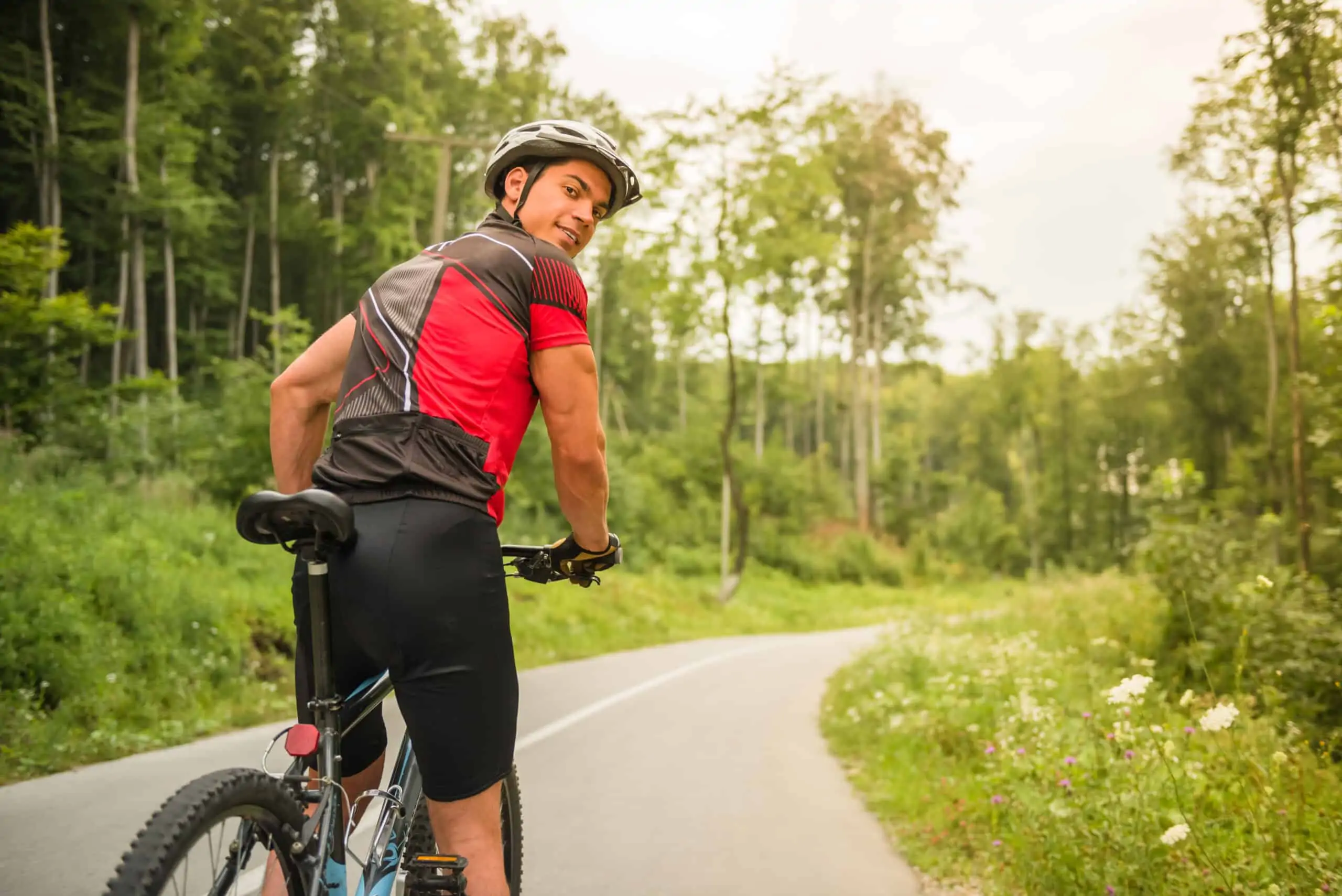
So let’s get down to it.
Saddle Choice
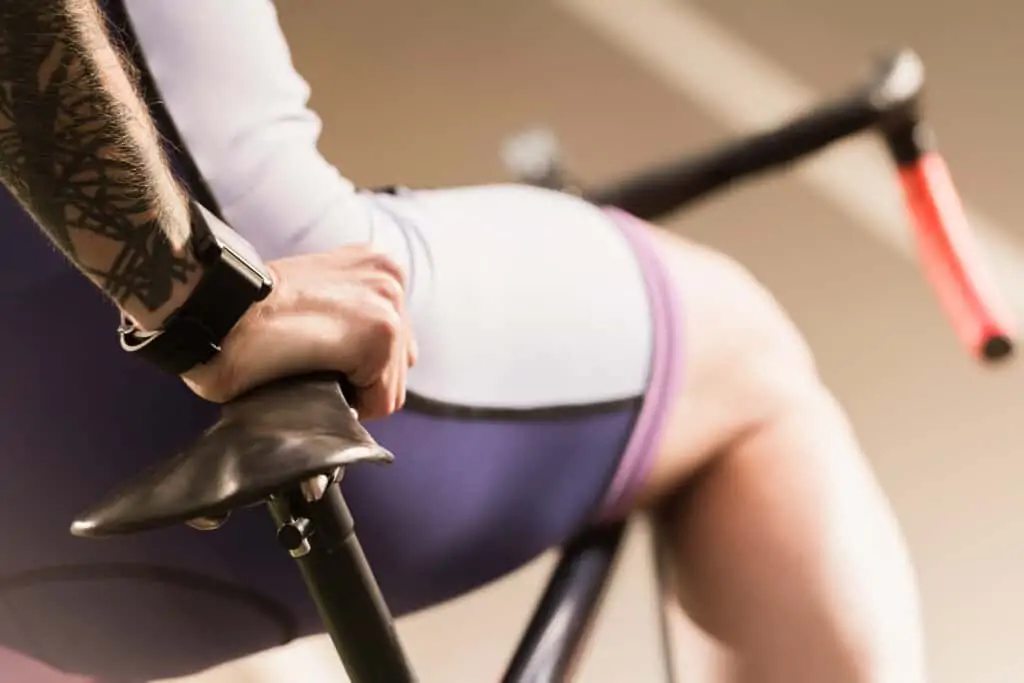
For starters, you should choose the right saddle; we recommend a saddle with thin padding that won’t exert too much pressure on your soft tissues.
If we had to choose, we would pick the Büchel Wittkop Medicus Twin Saddle as one of the best comfort seats for men. It has a minimalist anatomic design with a cut and flat nose at the front that makes it easier to position your sit bones on the saddle.
What’s even more impressive is that the saddle is filled with gel material that doesn’t strain the perineum area. If you take a closer look, you will notice it has a hole in the center that helps to reduce the pressure. Besides that, it’s integrated with an all-around bumper that absorbs shock.
Choose good quality cycle shorts
Good quality padded shorts prevent chafing, reduce pressure points and absorb road vibrations. Beyond that, padded bicycle shorts will make you more flexible and aerodynamic.
The question is, what is the best cycle shorts you can get your hands on?
Well, there are a lot of good cycle shorts available but we think the Endura Xtract Gel Shorts II makes the cut. For what it’s worth, they’re fitted with a synthetic gel pad that decreases friction between your legs and protects your genitals from road vibrations and shock.
The Endura Xtract Gel Shorts II are also made out of moisture-wicking material that dries quickly (nylon and polyester) to prevent sores and rashes. To top it off, the material is ultra-lightweight but it compresses your muscles to reduce fatigue on a long-distance ride.
But that’s not all; when wearing the cycle shorts, make sure that you do the following:
Pull your shorts all the way up
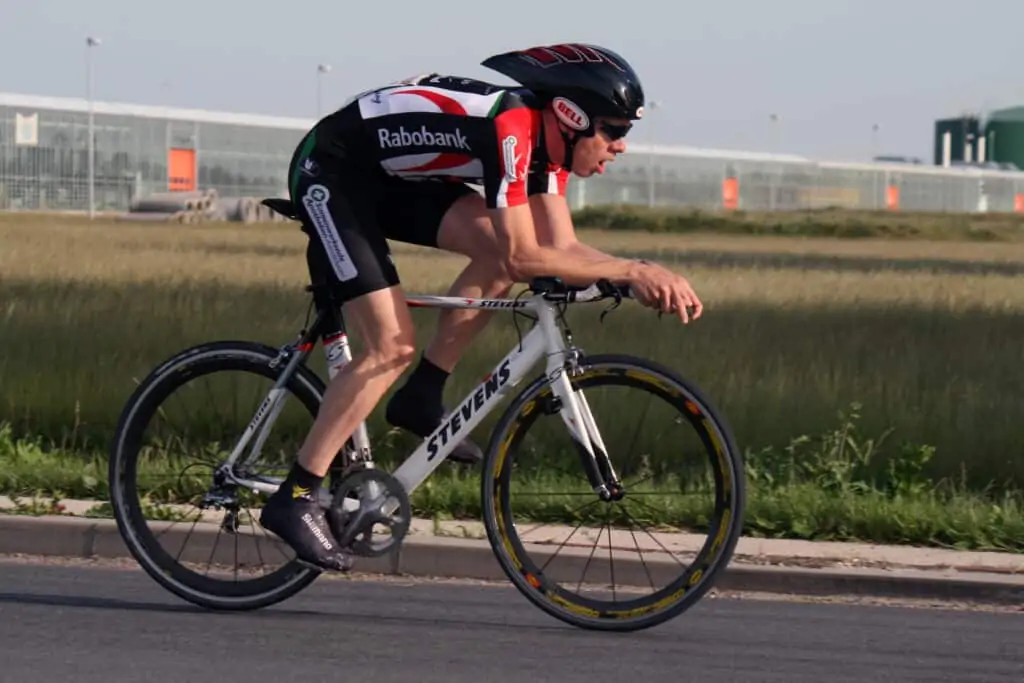
Inside your cycle shorts, you should see a padded section on the crotch area commonly known as a chamois. It’s specifically designed to alleviate pressure and friction when you’re riding a bike. In fact, some cycling shorts such as the Endura Xtract Gel Shorts II use chamois with antimicrobial properties to slow down bacteria growth.
However, if you don’t pull your shorts all the way up so that your groin region is in close contact with the chamois, you could experience saddle sores or genital numbness after a long ride. Well, nobody ever teaches you how to wear bike shorts but you can do a ‘chamois dance’ to make sure it fits right.
It’s not really a dance move, but you can do it by bending both your left and right legs up and out after you’ve worn the bike shorts. While you’re moving your legs, put your hand over the chamois pad to make sure it fits snuggly.
Also, the fabric shouldn’t cut off air circulation or stretch out against your skin to make you uncomfortable.
But if you don’t want to go through all that trouble, why not wear bibs? Unlike typical bike shorts, bibs are designed with straps that position over your shoulders to pull the shorts all the way up.
Don’t use underwear
As we previously mentioned, the chamois in your bike shorts are made up of fabric that wicks moisture and prevents saddle sores. However, most underwear garments are made out of materials such as cotton that hold in moisture or chafe your skin.
Also, cotton undies tend to create a warm and soggy environment that is ripe for bacteria growth; especially if you sweat a lot. The inevitable outcome is saddle sores, skin irritation, and infections.
Once you go commando, you never go back.
Minimize The Chance of Developing Saddle Sores
Sometimes choosing a different saddle, wearing good quality shorts, going commando and doing the chamois dance is not enough.
If you’ve tried everything but you still experience bike seat pain after a long ride, you should try the following hacks:
Step 1: Lubricate with chamois cream
Chamois cream can hydrate your skin, reduce friction when you pedal, and prevent sores in your butt. Better yet, some chamois cream products have antibacterial properties to prevent an infection.
If you’re looking for the best chamois cream, we recommend Chamois Butt’r Original Anti-Chafe Cream. It’s one of the most popular chamois creams among professional cyclists, swimmers, runners, and triathletes. Besides its popularity, the Chamois Butt’r Original is a non-greasy cream that can easily be washed off your skin and clothes. Also, it doesn’t contain any paraben, gluten, artificial fragrance, or color. All you have to do is just apply it directly to your chamois or skin and it will work like magic to prevent skin chafing.
Step 2: Sculpt!
To shave or not to shave down there? Well, it depends on who you ask; but according to recent research, shaving your pubic hair before a long ride could do more harm than good. That’s because shaving and waxing can irritate the skin and cause all sorts of issues such as razor burn, ingrown hairs, sore bumps, and folliculitis.
But if you must shave, make sure you do it a few days before you go out on a ride. This is important because you want the sharp hair edges that irritate your skin after a shave to soften up like natural uncut hair.
Also, consider using an electric razor to shave instead of a razor blade that is likely to irritate your skin. If you have sensitive skin, you could apply an antibiotic cream like Neosporin after a shave.
Step 3: Add Glide
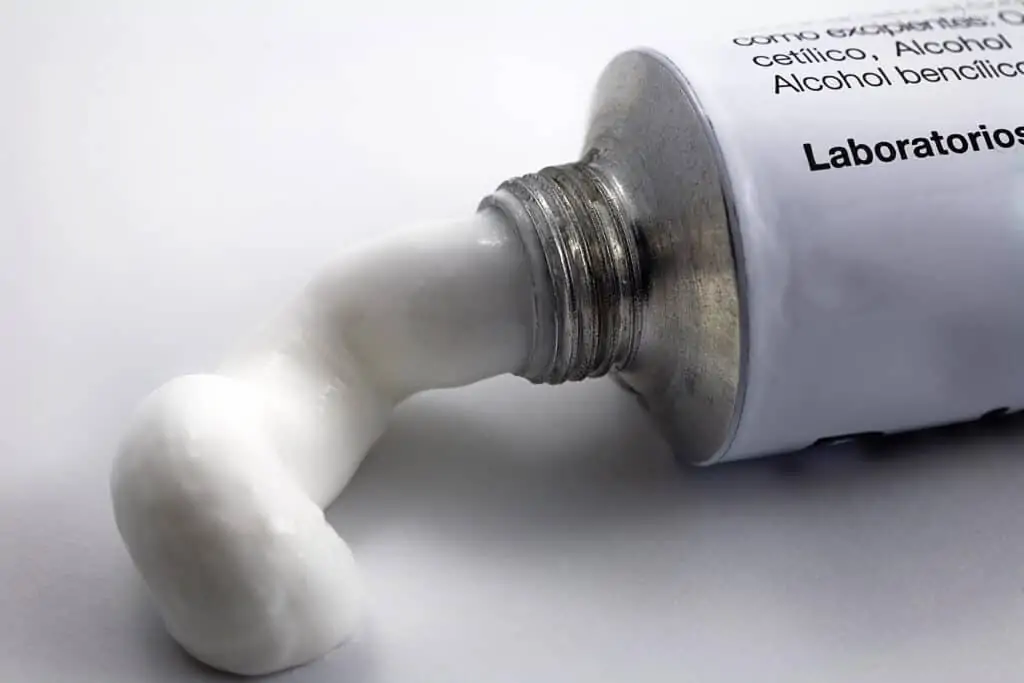
Cyclists who have a hard time riding without their thighs rubbing against the saddle can apply anti-friction gel like Lanacane to ease the problem. The gel dries on contact when applied on your inner thighs forming a soft protective shield that prevents skin chafing.
The best part is, if you’re a triathlete and you jump on the bike after a swim, the Lanacane cream will still work like a charm since it’s moisture-proof. Not to mention, the gel is hypoallergenic, fragrance-free, and won’t stain your clothes.
Step 4: Switch up your chamois
Even though chamois can make a big difference to improve your comfort, most people forget that if you don’t choose the right type of quality, you could still experience bike seat pain. Also, you should choose a chamois pad depending on how long you intend to cycle.
For instance, a lightweight and thin 3mm chamois pad would be ideal for short rides and daily work commutes. But if you’re going for a long-distance ride, you should consider a heavyweight chamois pad that is at least 8mm thick with a gel insert.
An 8mm dual-density chamois pad would also be suitable for moderate cycling trips, but a gel insert wouldn’t be necessary. Actually, some of the best chamois pads are not too thin or too thick.
Besides that, you should consider single-density, flatlock stitched, un-textured, and chemical-free chamois pads if you want to be more comfortable. However, if you still get saddle sores, you should consider Joshua Tree Organic Cycling Salve; it’s used to heal chafing and saddle sores. Alternatively, you can apply Gooch Guard Chamois Cream to prevent chafing and friction.
What are The Common Issues?
Genital Numbness
Feeling numb in your penis or balls after a long ride is not something to be taken lightly; even if it happens for a few minutes and you start feeling okay. As a matter of fact, it could cause serious long-term complications if you don’t solve it immediately.
Genital numbness happens when the arteries supplying oxygenated blood in your penis or testicles are compressed and you can’t really feel anything down there. In most cases, you will experience genital numbness if you don’t sit right on your saddle; or it could be because you haven’t adjusted your saddle or handlebar properly.
You could also experience genital numbness if you’re using the wrong saddle that compresses your soft tissue. Like we mentioned earlier, it’s important to choose a thinly padded saddle that won’t cause you such problems.
Another thing; when you sit on the saddle, the pressure should be concentrated on the ischial tuberosities or the sit bones and not the soft tissue in your perineum.
Prostate Problems
The rumor that bicycle riding can cause impotence or erectile dysfunction has been dismissed as a myth; according to a study published in 2014 by the Journal of Men’s Health.
Despite that, going on a long-distance trip could temporarily increase your prostate-specific antigen (PSA) levels. That doesn’t mean you will have prostate problems in the future because of riding a bike, but your prostate exam could be inaccurate if you do it immediately after a long-distance trip.
In fact, vigorous physical activities like running, swimming, and hiking tend to temporarily increase prostate-specific antigen (PSA) concentration in the body, and cycling is no different. That’s why your physician wouldn’t recommend you work out before taking a PSA test.
But just because you shouldn’t be concerned about prostate problems, you still need to be careful to avoid genital numbness, nerve damage, and saddle sores.
Pain in the Testicles
The good news is, testicular pain is rare when you’re riding a bike; unless you slip while standing on the bike and your testicles hit the crossbar. Ouch! It hurts to think about it!
You could also experience soreness, excess sensitivity, or a dull ache in your testicles if you compress the pudendal nerve while riding your bike. In other words, avoid pressing your balls against the nose of the saddle.
How do you avoid testicular pain? You just need to do the same things that you would do to prevent genital numbness.
FAQs
Q. Why do my balls hurt when I ride a bike?
A. There are a few explanations why your balls hurt when riding a bike. First, it could be because you haven’t adjusted your saddle or handlebar properly. Secondly, it’s probably because you don’t sit right on the saddle.
Other than that, it could be because you’re using the wrong type of saddle. A good quality saddle should have thin padding that doesn’t compress your testicular nerves.
But if you try everything and you still feel pain in your testicles, you should consult a physician.
Q. Why are men’s bike seats so uncomfortable?
A. In most cases, a bike seat will be uncomfortable because you’re putting a lot of pressure on your perennial soft tissues rather than on the sit bones.
Another reason for men feeling uncomfortable on the bike seat is chafing caused by friction, but you can solve that issue by wearing bibs and using chamois cream.
Q. Will my bum get used to cycling?
A. If you’re a beginner, you may feel uncomfortable on your bum even if you’ve done everything right. Once your body adapts, the pain should slowly fade away after a few weeks.
Riding a bicycle is no different than hitting the gym; your muscles may feel sore for the first few days, but eventually, you should feel okay after a while.
Q. How do I stop my groin from hurting when cycling?
A. If you want to stop your groin from hurting, you need to get a professional bike fit and choose the right saddle for your bike. Wearing good quality bibs and applying chamois cream will also reduce the pain significantly.
Conclusion
Almost every man who has ridden a bicycle long enough has dealt with bike seat pain at some point. It’s almost like a rite of passage to becoming a man.
But it’s not a problem you can close your eyes and wish it away; you need to face it head-on and tackle it. How do you do that? It’s simple, just follow all the steps we’ve recommended in this article.
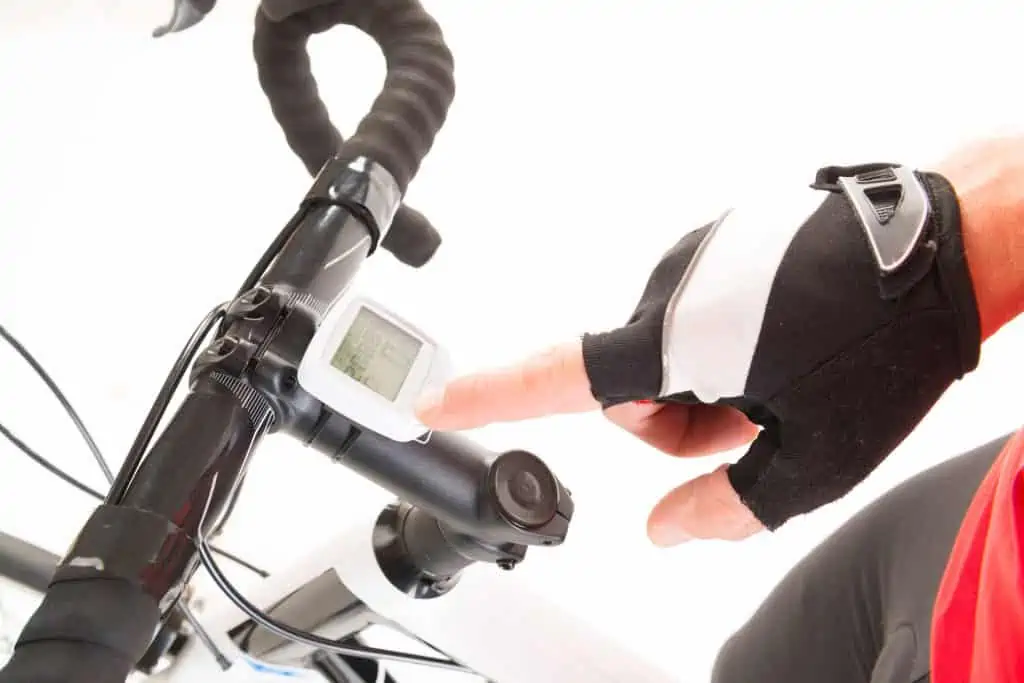
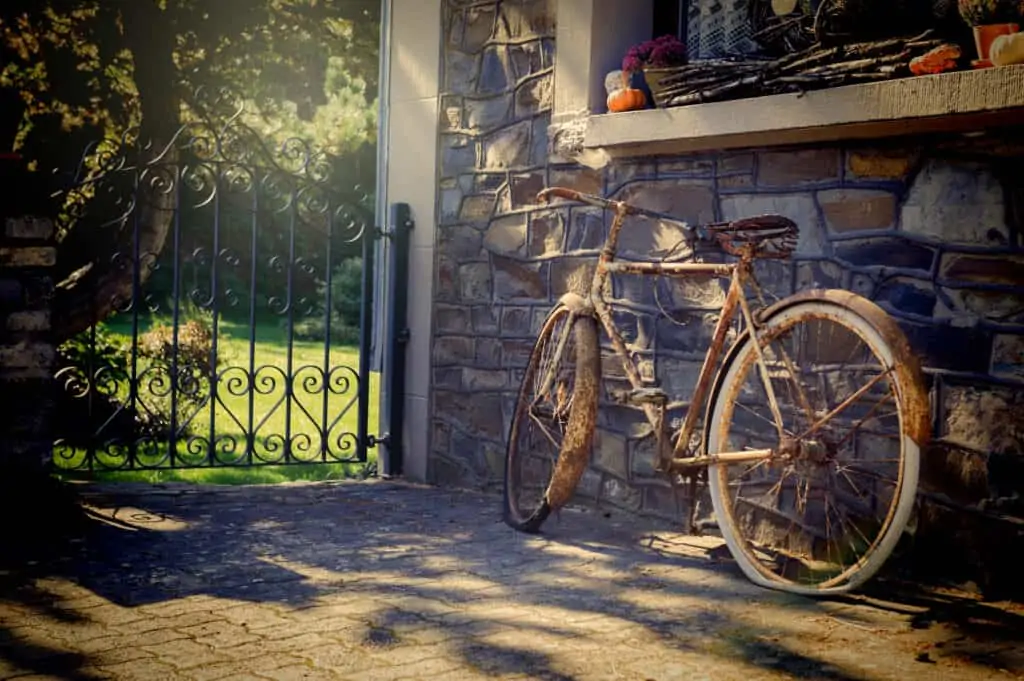
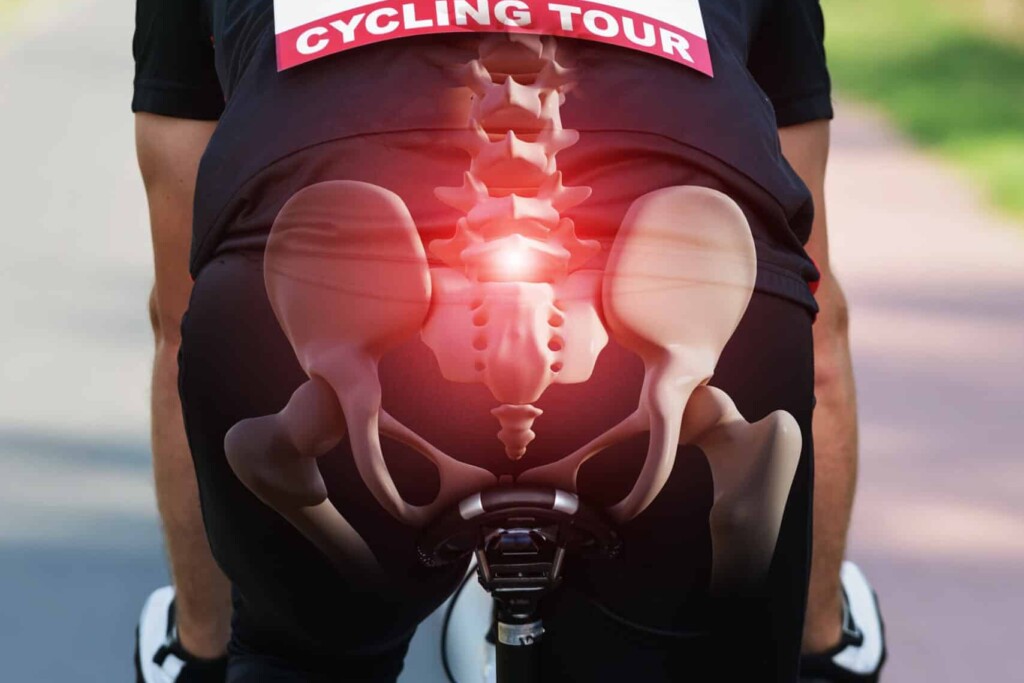
Pingback: The 6 Most Comfortable Bike Seats for Men 2021 - inspiredcyclist